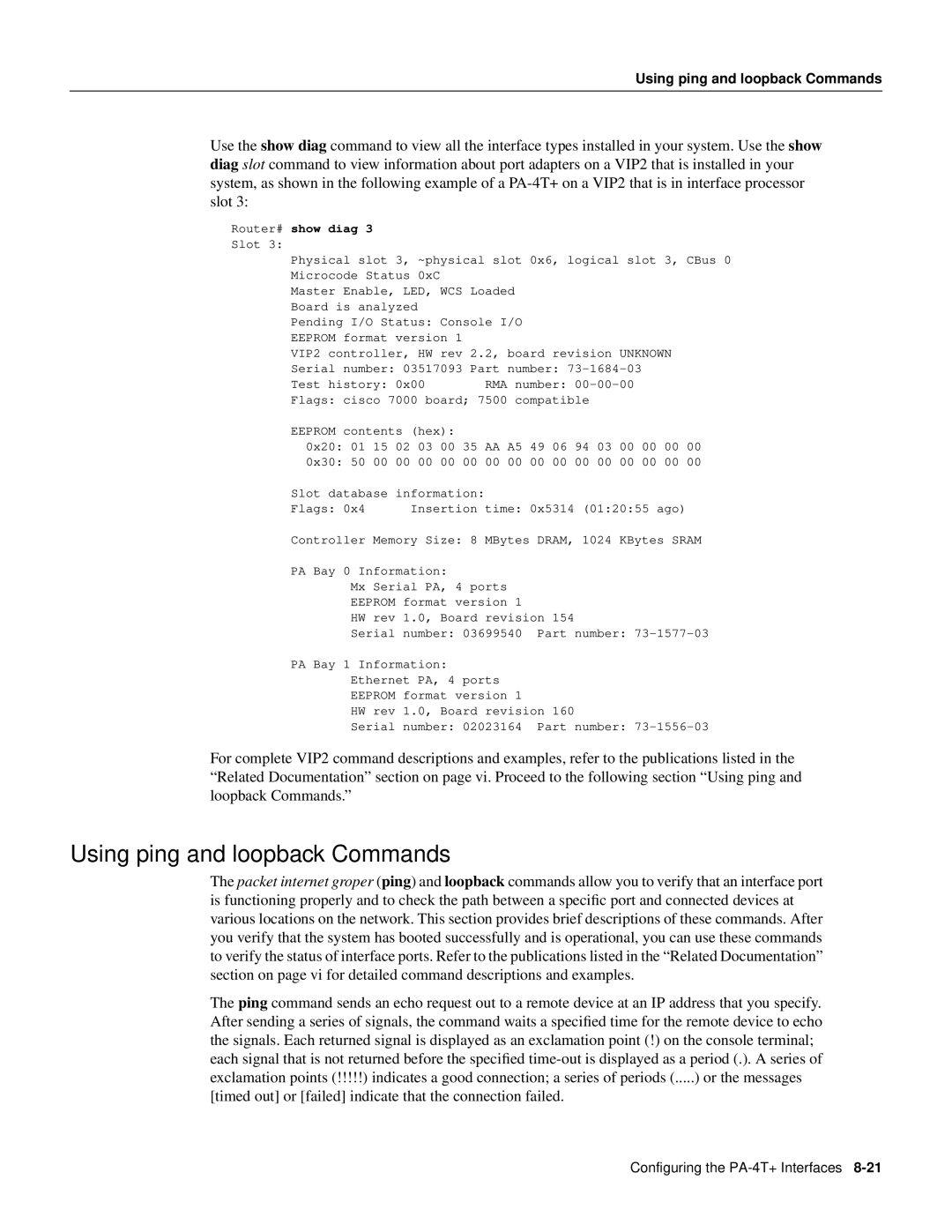Using ping and loopback Commands
Use the show diag command to view all the interface types installed in your system. Use the show diag slot command to view information about port adapters on a VIP2 that is installed in your system, as shown in the following example of a
Router# show diag 3
Slot 3:
Physical slot 3, ~physical slot 0x6, logical slot 3, CBus 0
Microcode Status 0xC
Master Enable, LED, WCS Loaded
Board is analyzed
Pending I/O Status: Console I/O
EEPROM format version 1
VIP2 controller, HW rev 2.2, board revision UNKNOWN
Serial number: 03517093 Part number:
Test history: 0x00 | RMA | number: |
Flags: cisco 7000 board; 7500 | compatible | |
EEPROM contents (hex):
0x20: 01 15 02 03 00 35 AA A5 49 06 94 03 00 00 00 00
0x30: 50 00 00 00 00 00 00 00 00 00 00 00 00 00 00 00
Slot database information:
Flags: 0x4 Insertion time: 0x5314 (01:20:55 ago)
Controller Memory Size: 8 MBytes DRAM, 1024 KBytes SRAM
PA Bay 0 Information:
Mx Serial PA, 4 ports
EEPROM format version 1
HW rev 1.0, Board revision 154
Serial number: 03699540 Part number:
PA Bay 1 Information:
Ethernet PA, 4 ports
EEPROM format version 1
HW rev 1.0, Board revision 160
Serial number: 02023164 Part number:
For complete VIP2 command descriptions and examples, refer to the publications listed in the “Related Documentation” section on page vi. Proceed to the following section “Using ping and loopback Commands.”
Using ping and loopback Commands
The packet internet groper (ping) and loopback commands allow you to verify that an interface port is functioning properly and to check the path between a specific port and connected devices at various locations on the network. This section provides brief descriptions of these commands. After you verify that the system has booted successfully and is operational, you can use these commands to verify the status of interface ports. Refer to the publications listed in the “Related Documentation” section on page vi for detailed command descriptions and examples.
The ping command sends an echo request out to a remote device at an IP address that you specify. After sending a series of signals, the command waits a specified time for the remote device to echo the signals. Each returned signal is displayed as an exclamation point (!) on the console terminal; each signal that is not returned before the specified
[timed out] or [failed] indicate that the connection failed.
Configuring the
